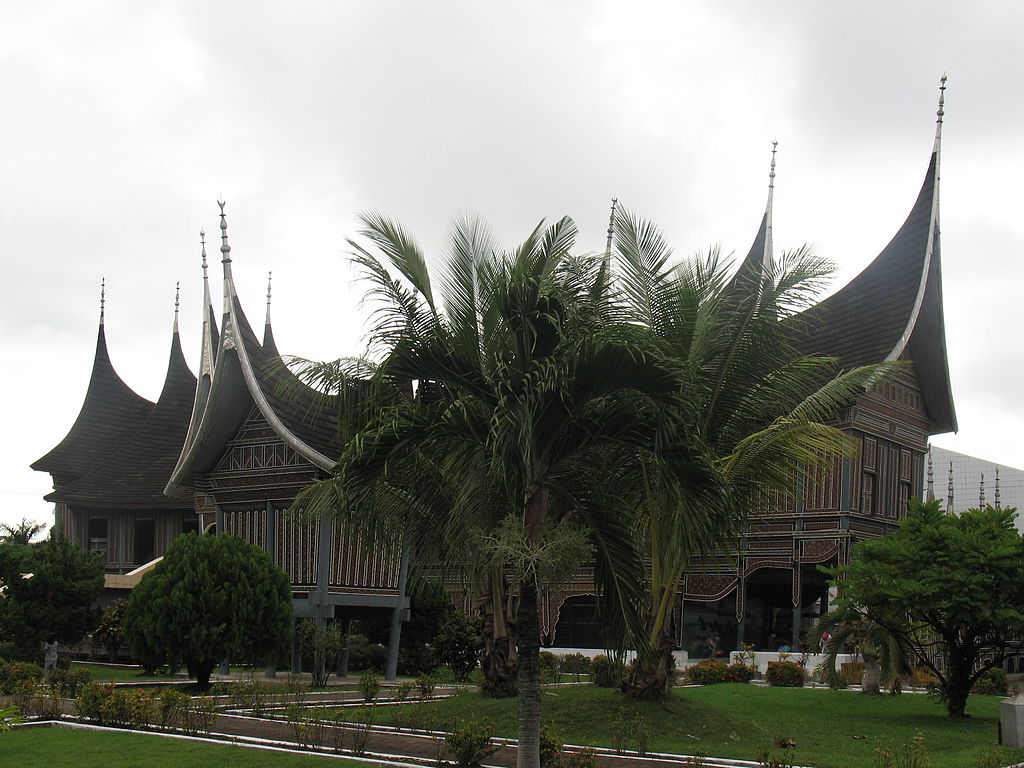Sumatra Travel Guide: Uncovering the Best Must-Visit Destinations and Experiences
Sumatra, the sixth-largest island in the world, is a treasure trove of natural wonders, cultural diversity, and unique experiences. From stunning landscapes to vibrant cities, Sumatra offers a wide range of attractions that should be on every traveler’s bucket list. The Sumatra Travel Guide provides essential information and insights for exploring this captivating Indonesian island, from its pristine natural wonders and vibrant cultural heritage to practical tips on transportation, accommodation, and local customs, ensuring an enriching and seamless travel experience.
From Bali to Krakatoa | Discovering the Volcanic Wonders Between West Java and Sumatra
Must visit places in Sumatra, Indonesia
Sumatra, Indonesia is a treasure trove of must-visit destinations, offering a diverse range of attractions, from the lush rainforests and magnificent wildlife of Gunung Leuser National Park to the awe-inspiring beauty of Lake Toba, making it an unforgettable destination for nature enthusiasts and cultural explorers alike. Here are some of the top must-visit places in Sumatra:
1. Lake Toba: Paradise on Earth Lake
Toba, the largest volcanic lake in the world, is a sight to behold. Start your journey by exploring Samosir Island, located in the middle of the lake. Relax on pristine beaches, take a refreshing swim in the crystal-clear waters, and indulge in traditional Batak cuisine. Discover the unique culture of the Batak people by visiting traditional villages, attending cultural performances, and admiring their impressive architecture.
Nestled amidst the stunning landscapes of Sumatra, Lake Toba stands as a true paradise on earth. With its mesmerizing beauty and tranquil ambiance, this vast volcanic lake offers a retreat like no other. Let’s embark on a journey to explore the wonders of Lake Toba and discover why it is considered a must-visit destination.
The Magnificence of Lake Toba: Lake Toba, the largest volcanic lake in the world, stretches over 1,700 square kilometers, captivating visitors with its breathtaking beauty. Surrounded by lush green mountains and dotted with charming villages, the lake’s crystal-clear waters create a serene and peaceful atmosphere that is perfect for relaxation and rejuvenation.
Samosir Island: Serenity on Lake Toba
Jewel in the Heart of the Lake: One of the highlights of Lake Toba is Samosir Island, located right in the middle of the lake. This enchanting island offers a picturesque landscape and a rich cultural heritage. Explore traditional Batak villages, where friendly locals warmly welcome visitors and share their unique customs and traditions. Immerse yourself in the local way of life, witness traditional dance performances, and marvel at the impressive Batak architecture.
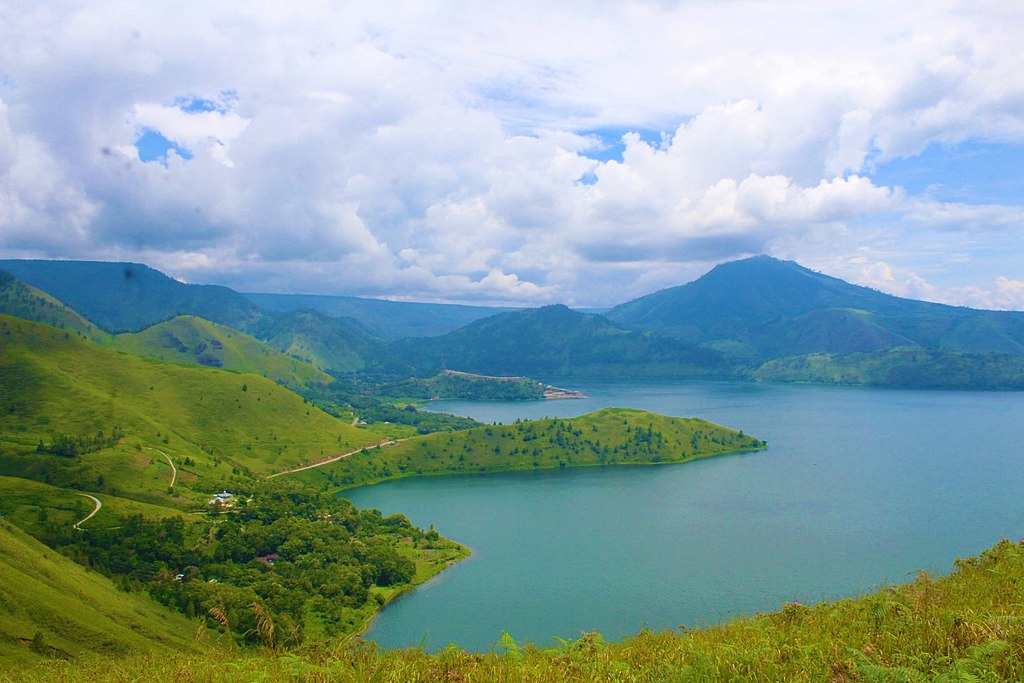
View of Holbung Hill on Samosir island. ButetSinaga, CC BY-SA 4.0, via Wikimedia Commons
Escape to the tranquil oasis of Samosir Island, located in the middle of Lake Toba. Immerse yourself in the peaceful surroundings, rent a bicycle to explore the island’s picturesque landscapes, and visit traditional Batak villages to learn about their customs and way of life. Try traditional Batak dishes, such as the flavorful grilled fish known as “arsik,” and witness the mesmerizing Sigale-gale dance.
Activities to Experience
There is no shortage of activities to indulge in while visiting Lake Toba. Take a leisurely boat ride across the serene waters, enjoying the refreshing breeze and stunning views of the surrounding mountains. Swim in the cool, clear lake, or simply relax on the pristine beaches and soak up the sun. For those seeking adventure, explore the hiking trails that lead to breathtaking viewpoints, offering panoramic vistas of the lake and its surroundings.
Culinary Delights
Lake Toba is not only a feast for the eyes but also for the taste buds. Sample the delicious cuisine of the Batak people, known for its rich flavors and unique culinary traditions. Try the iconic dish of grilled fish called “arsik” or indulge in “saksang,” a savory pork dish cooked with spices. Don’t miss the opportunity to savor the famous Batak coffee, known for its distinct flavor and aroma.
Conclusion: Lake Toba is truly a paradise on earth, captivating visitors with its natural splendor and cultural richness. Whether you seek tranquility, adventure, or a glimpse into the local way of life, Lake Toba offers it all. So, pack your bags and embark on a journey to this enchanting destination, where you can unwind amidst breathtaking landscapes, immerse yourself in a vibrant culture, and create memories that will last a lifetime.
How to get to Lake Toba?
There is no direct means of transport to get to the island of Samosir, located inside Lake Toba. You will first need to take a plane to Medan, a city in North Sumatra, then take a taxi to Parapat (the nearest town to Lake Toba) and from Parapat, take a boat or ferry to Tuk Tuk on the island of Samosir.
Transport to Samosir Island (Lake Toba) from Parapat is by ferry. From the pier of Parapat, take the ferry to Tuk Tuk which is opposite on the island of Samosir. boats leave every hour from 8:30 a.m. to 7 p.m.
2. Bukit Lawang: Encounter Orangutans in the Wild
Nestled in the heart of the Gunung Leuser National Park, Bukit Lawang is a haven for nature enthusiasts and wildlife lovers. Embark on an unforgettable jungle trek to witness orangutans in their natural habitat. Trek through lush rainforests, listen to the symphony of exotic birds, and spot other fascinating wildlife species. River tubing along the scenic Bohorok River is another exhilarating activity that shouldn’t be missed.
Hidden deep within the lush jungles of Sumatra lies a remarkable place called Bukit Lawang, where humans and orangutans coexist in harmony. This small village serves as a gateway to the dense Gunung Leuser National Park, offering visitors a unique opportunity to witness these incredible creatures in their natural habitat. Let’s delve into the wonders of Bukit Lawang and discover the magic of encountering orangutans in the wild.
Gunung Leuser National Park: Embark on a wildlife adventure in Gunung Leuser National Park, a UNESCO World Heritage Site
Trek through the dense rainforests in search of endangered species such as orangutans, Sumatran tigers, and rhinoceros. Experience the thrill of spotting unique flora and fauna, listening to the sounds of nature, and witnessing the untouched beauty of Sumatra’s wilderness.
As you enter the dense rainforests of Gunung Leuser National Park, you’ll find yourself immersed in a world teeming with life. The park is famed for being one of the last remaining habitats of the critically endangered Sumatran orangutans. Witnessing these majestic creatures swinging effortlessly through the treetops is an experience that will leave you in awe.
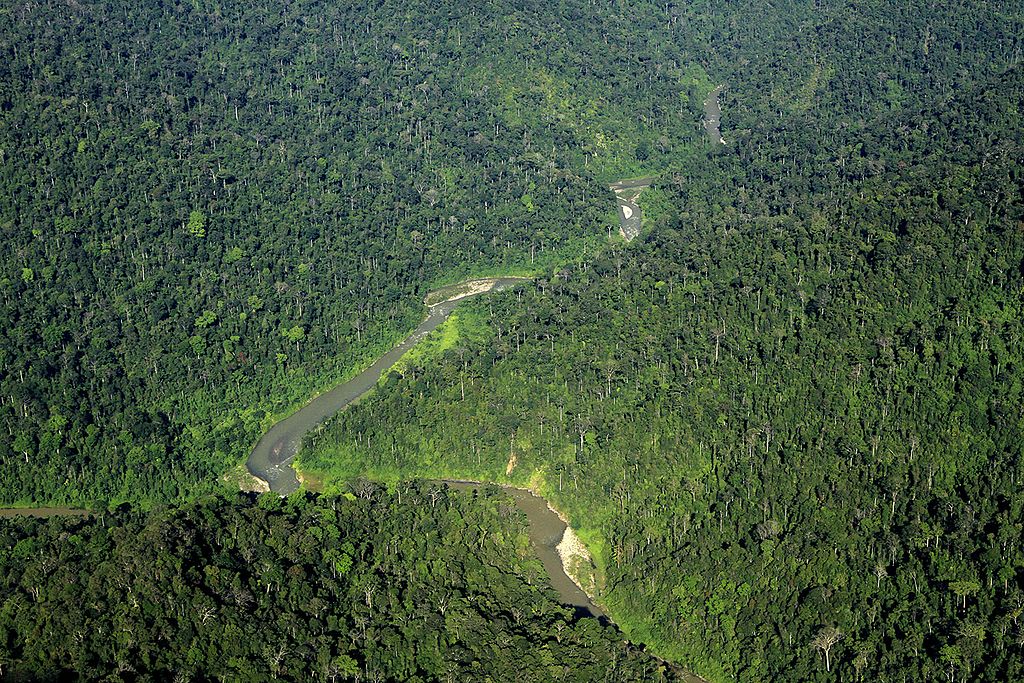
Rain forest in the core zone of Gunung Leuser National Park, Aceh Province, Indonesia. Junaidi Hanafiah, CC BY-SA 4.0, via Wikimedia Commons
The Pristine Wilderness of Gunung Leuser National Park: Situated in the northern part of Sumatra, Gunung Leuser National Park is a UNESCO World Heritage Site and a haven for biodiversity. With its dense rainforests, winding rivers, and diverse ecosystems, the park provides a sanctuary for numerous wildlife species, including the critically endangered Sumatran orangutans. Exploring this pristine wilderness is a once-in-a-lifetime experience that connects us with nature in its purest form.
The entrance to the park is located in Bukit Lawang, and from there, you can hire a local guide who is knowledgeable about the trails and wildlife. Trekking is the main mode of transportation within the park, and your guide will lead you through the dense jungle, pointing out wildlife and sharing valuable insights about the ecosystem.
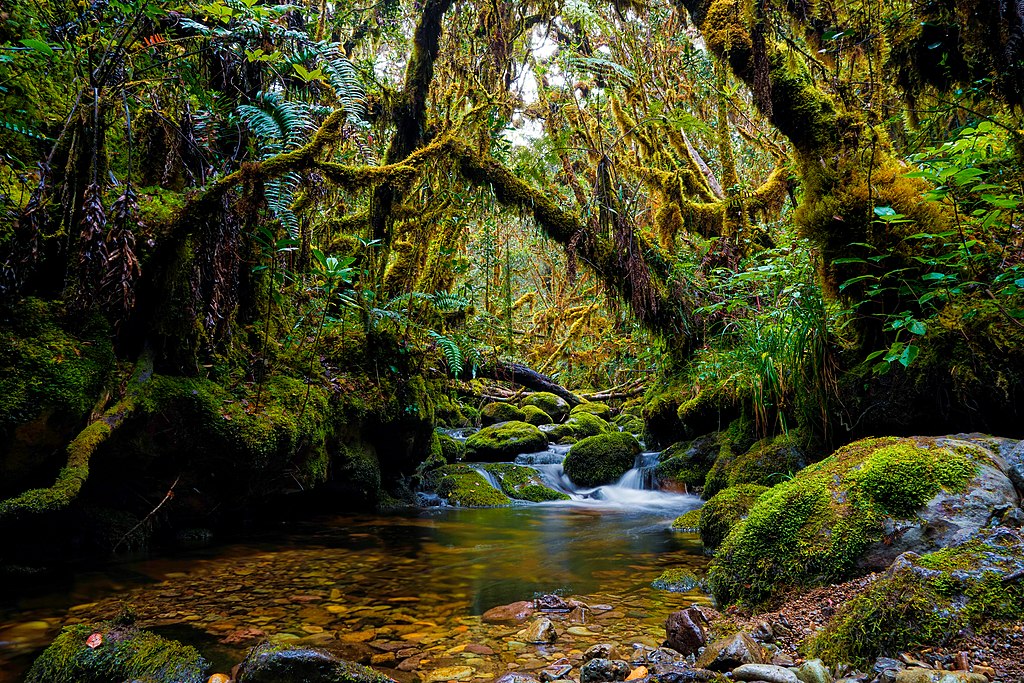
Gunung Leuser National Park is a natural laboratory rich in biodiversity. This national park is the habitat of most fauna, ranging from mammals, birds, reptiles, amphibians, fish and invertebrates. Ganjarmustika1904, CC BY-SA 4.0, via Wikimedia Commons
Orangutan Encounters
The highlight of visiting Bukit Lawang is undoubtedly the chance to observe orangutans up close in their natural habitat. Accompanied by experienced guides, embark on treks through the jungle, following trails frequented by these intelligent primates. As you navigate the dense foliage and listen to the symphony of wildlife, keep your eyes peeled for sightings of orangutans swinging through the trees, foraging for food, and caring for their young. Witnessing their playful antics and witnessing their gentle nature is a truly awe-inspiring experience.

Orang-Utan In Bukit Lawang, North Sumatra. Tbachner, Public domain, via Wikimedia Commons
Conservation Efforts
Bukit Lawang serves as an important hub for orangutan conservation efforts. The local community, together with conservation organizations, work tirelessly to protect these endangered creatures and their habitat. Through responsible tourism practices, education programs, and rehabilitation centers, they strive to ensure the long-term survival of orangutans and promote sustainable eco-tourism in the region. By visiting Bukit Lawang, you are actively supporting these conservation initiatives.
Beyond Orangutans
While orangutans are the main attraction in Bukit Lawang, there is more to explore in the area. Take the opportunity to soak in the pristine beauty of the Bohorok River, where you can go tubing or rafting amidst the lush greenery. Trek to nearby waterfalls and natural pools, immersing yourself in the refreshing waters of the jungle. Engage with the friendly locals, savor traditional Indonesian cuisine, and learn about the rich cultural heritage of the Karo Batak people.
Conclusion: Bukit Lawang is a paradise for nature enthusiasts, offering a rare chance to encounter orangutans in their natural habitat. It is a place where the line between humans and wildlife blurs, and where conservation efforts work hand in hand with responsible tourism. By visiting Bukit Lawang, you not only create unforgettable memories but also contribute to the preservation of these incredible creatures. So, lace up your hiking boots, embrace the adventure, and prepare to be captivated by the remarkable orangutans of Bukit Lawang.
How to get to Bukit Lawang?
First you have to go to Sumatra Island because Bukit Lawang is located in North Sumatra, about 3 to 5 hours from Medan and Kualanamu airport (depending on traffic). The best departure airports are Kuala Lumpur, Singapore, Jakarta. From there, take a short haul flight to Kualanamu Airport (approximately 1 hour). We recommend Air Asia which offers very good offers!
Then there are 3 transportation options to get to Bukit Lawang according to your budget, time and comfort: private car, tourist bus or public bus. If you are doing a round trip to Sumatra, you can also come to Bukit Lawang from Berastagi and/or Lake Toba by tourist bus (also called shared car, with other tourists).
3. Batang Palupuh Nature Conservation Center to see Rafflesia Flowers (West Sumatra)
The Batang Palupuh Nature Conservation Center is a special place where you can see a very unique flower called Rafflesia. This flower is famous for being one of the largest in the world, and it has a very interesting way of growing. The conservation center is like a home for these special flowers, where they are protected and taken care of. When you visit, you can witness the incredible beauty of Rafflesia up close, and learn all about why it’s so special. It’s a rare opportunity to see something truly extraordinary in nature!
The Rafflesia flower is really unique. It doesn’t have regular parts like stems, leaves, or roots. Instead, it’s a special kind of plant that relies on other plants to survive. It attaches itself to a type of vine called Tetrastigma and uses a special part called a haustorium to absorb what it needs from the vine. It’s like a plant vampire, but it doesn’t hurt the vine too much! This is one of the things that makes Rafflesia so fascinating and special.
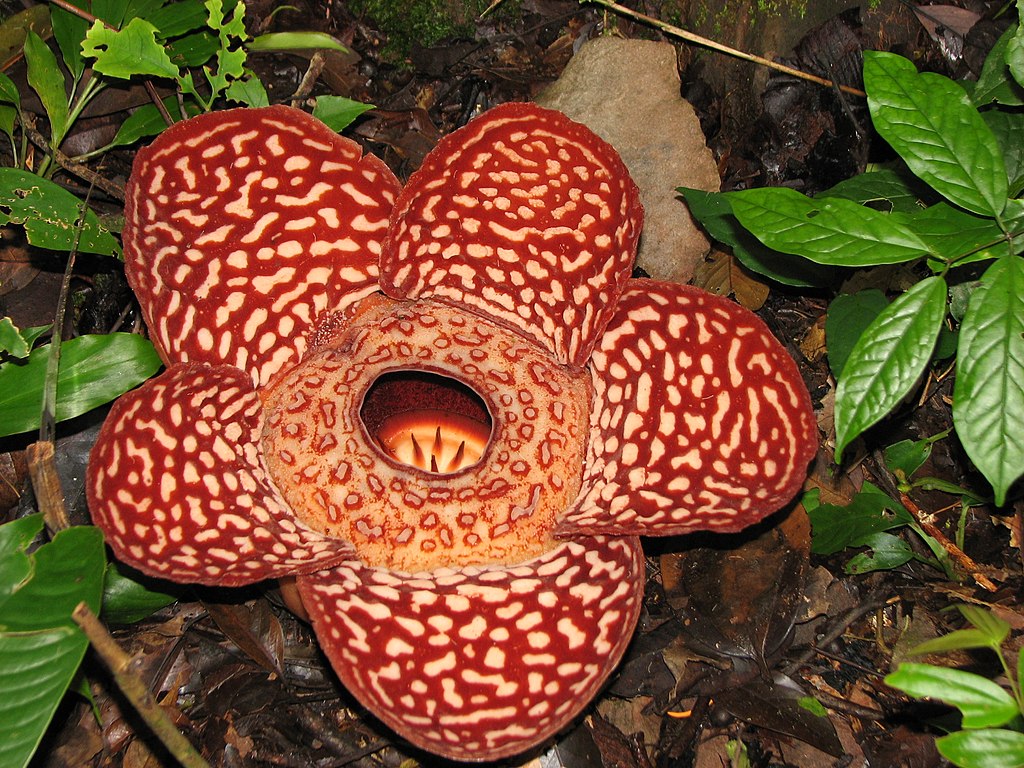
Rafflesia Arnoldii, largest flower in the world is endemic to Borneo. BurakovaLP, CC BY 4.0, via Wikimedia Commons
Accessibility
To reach this location can be reached by road with the city route Bukitinggi – Palupuh which is 12 km (7.5 miles) away. This area can be reached by road from Bukittinggi to Koto Rantang about 30 minutes by public transport, then continue by pass the footpath about 500 m (0.3 mile) can be passed by 2-wheeled vehicles or 4-wheeled vehicles, in the area there is a footpath that connects the group of Rafflesia arnoldi flowers
4. Mentawai Islands: Surfing and Cultural Immersion
For surfers seeking an adrenaline rush, the Mentawai Islands offer world-class waves and pristine beaches. Experience the thrill of riding the perfect barrel, explore the vibrant underwater world through snorkeling or diving, and engage with the indigenous Mentawai people to learn about their fascinating customs and tattoo artistry.
Tucked away in the Indian Ocean, off the coast of West Sumatra, lies a tropical paradise known as the Mentawai Islands. With its world-class surf breaks and rich indigenous culture, the Mentawai Islands offer a unique blend of exhilarating surf experiences and immersive cultural encounters. Let’s dive into the wonders of the Mentawai Islands and discover the perfect blend of thrilling waves and authentic cultural immersion.
Surfing Mecca
For surf enthusiasts, the Mentawai Islands are a dream destination. With their consistent swells, pristine beaches, and stunning reef breaks, these islands offer some of the best waves in the world. Experienced surfers can challenge themselves with legendary breaks like Macaronis, Rifles, and Bankvaults, while beginners can find gentler waves to learn and improve their skills. Surf camps and resorts dot the coastline, providing comfortable accommodations and expert guidance for an unforgettable surf adventure.

Surf break in the Mentawai Islands, Sumatra, Indonesia known as Lance’s Right, after Lance King. Pathofkarma, CC BY-SA 4.0, via Wikimedia Commons
Sipora Island (Mentawai distict): Surfing Paradise For avid surfers
Sipora Island in the Mentawai archipelago is a must-visit destination. With its world-class waves and stunning natural beauty, it offers the perfect setting for an unforgettable surfing experience. Catch the famous breaks at spots like Telescopes, Lance’s Right, and Macaronis, and enjoy the laid-back island vibes that make Sipora a surfer’s paradise.

Three Mentawai women rowing Pompong. Pompong is the name for a rowing boat and is one form of transportation that is widely used by the Mentawai people. Zulfikar Fii, CC BY-SA 4.0, via Wikimedia Commons
The island offers a laid-back, tropical vibe, making it the perfect destination for surf enthusiasts looking for the wave-riding experience.

Nyang nyang surf camp Siberut. Ebaysurfcamp, CC BY-SA 4.0, via Wikimedia Commons
Immersive Cultural Experiences
Beyond its world-class waves, the Mentawai Islands are home to a fascinating indigenous culture. The Mentawai people have inhabited these islands for centuries, and their traditions, beliefs, and unique way of life continue to thrive. Engage in cultural immersion by visiting traditional Mentawai villages, where you can interact with the locals, witness traditional ceremonies, and learn about their ancestral customs. Embrace the opportunity to live alongside the Mentawai people, gaining insights into their spirituality, shamanistic rituals, and traditional tattooing practices.

Sikerei is a medical shaman who is good at dancing in the Mentawai Islands. If sick, people usually go to a doctor or to an alternative medicine specialist to cure the disease. However, it is different from the people in the interior of the Mentawai Islands, South Siberut District, Mentawai Islands Regency, West Sumatra. Erisonjkambari, CC BY-SA 4.0, via Wikimedia Commons
Conservation and Sustainability
The Mentawai Islands are not only a playground for surfers and cultural enthusiasts but also a hub for conservation and sustainable tourism efforts. Organizations and local communities are actively involved in preserving the delicate ecosystem, protecting the marine life, and supporting the livelihoods of the Mentawai people. By visiting the islands, travelers can contribute to these conservation initiatives and ensure the long-term sustainability of this pristine natural and cultural heritage.
Explore Beyond the Waves
While surfing and cultural immersion are the main draws of the Mentawai Islands, there is more to discover. Embark on island-hopping adventures to explore the breathtaking landscapes, pristine beaches, and hidden coves. Snorkel or dive in the crystal-clear waters teeming with vibrant coral reefs and marine life. Trek through the lush rainforests, encounter exotic wildlife, and immerse yourself in the natural beauty of this remote paradise.
Conclusion: The Mentawai Islands offer a perfect blend of thrilling surf breaks and immersive cultural experiences. From riding epic waves to engaging with the indigenous Mentawai people, this tropical destination promises an unforgettable journey that goes beyond the surface. Embrace the thrill of the ocean and the richness of a vibrant culture as you explore the Mentawai Islands. Whether you’re a seasoned surfer or a curious traveler, this unique destination will leave you with lasting memories and a deep appreciation for the beauty of both nature and culture.
Getting to the Mentawai island
Travelers must use Padang Airport (Minangkabau International Airport, referred to as PDG) in West Sumatra for all travel to the Mentawai Islands.
Flights to Padang are usually routed via Kuala Lumpur (Malaysia), Jakarta (Indonesia) or Batam (Indonesia). Air Asia usually operates one or two morning flights (1 hour) from Kuala Lumpur to Padang. There are more than a dozen daily flights from Jakarta to Padang, with carriers like Garuda Airlines (always recommended), Sriwijaya, Citilink and Lion Air. The third solution is to go to Singapore and then go to Batam by boat (Indonesia). There is usually at least one flight per day (1 hour) from Batam to Padang. Compared to KL and Jakarta, this is the least popular flight.
Depending on which surf camp you are staying at, you will almost certainly need to spend a night in Padang at the start and end of your holiday before catching the fast ferry to Siberut, Tua Pejat or Sikakap. Nevertheless, there is a plethora of comfortable and cheap hotels near the Fast Ferry port. It is important to note that most surf charter trips do not require overnight stays in Padang.
5. Bukittinggi: Immerse Yourself in Minangkabau Culture
Journey to Bukittinggi and delve into the rich cultural heritage of the Minangkabau people. Visit the iconic Jam Gadang clock tower, explore the bustling markets, and savor the mouthwatering flavors of Padang cuisine. Engage in a traditional dance performance, witness a mesmerizing silat martial arts display, and explore the traditional architecture of the Rumah Gadang (big house).
Nestled in the heart of West Sumatra, Bukittinggi is a charming city that offers a captivating blend of natural beauty and rich cultural heritage. With its scenic landscapes, historic landmarks, and vibrant traditions, Bukittinggi provides an immersive experience where visitors can truly immerse themselves in the captivating Minangkabau culture. Let’s explore the attractions of Bukittinggi and discover the unique cultural tapestry that awaits.
The Cultural Hub of Minangkabau
Bukittinggi serves as the cultural hub of the Minangkabau people, one of the major ethnic groups in Indonesia. The city is dotted with stunning Minangkabau architecture, characterized by its distinctive horn-shaped roofs known as “rumah gadang.” These traditional houses are not just architectural marvels but also represent the matrilineal society and matriarchal customs of the Minangkabau people. Take a stroll through the city and marvel at these beautiful structures that stand as a testament to a rich cultural heritage.

This is a traditional Minangkabau house (Rumah Gadang), usually rich people, “dato” and kings in their clan own this house. Anguci, CC BY-SA 4.0, via Wikimedia Commons
Jam Gadang: The Iconic Clock Tower
Standing proudly in the heart of Bukittinggi is Jam Gadang, the iconic clock tower that has become a symbol of the city. Built during the Dutch colonial era, this majestic landmark showcases a fusion of European and Minangkabau architectural styles. Visit the tower and climb to its top for panoramic views of the city and surrounding landscapes. Admire the intricate details and learn about the historical significance of this iconic structure.
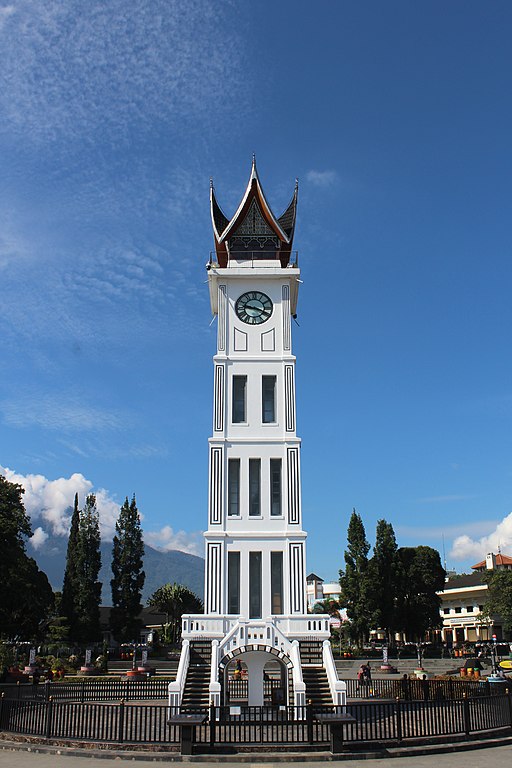
Jam Gadang (clock tower) Rhmtdns, CC BY-SA 4.0, via Wikimedia Commons
Culinary Delights of Minangkabau
No visit to Bukittinggi is complete without indulging in the mouthwatering cuisine of the Minangkabau people. Sample the iconic dishes such as rendang (slow-cooked beef in rich spices), nasi padang (a variety of flavorful dishes served with steamed rice), and sate padang (skewered meat with a flavorful sauce). Explore the local markets and street food stalls, where you can savor the authentic flavors of Minangkabau cuisine and experience the renowned hospitality of the locals.
Taman Bundo Kanduang Park
For a moment of tranquility amidst the bustling city, visit Taman Bundo Kanduang Park. This beautifully landscaped park is dedicated to preserving and showcasing the rich cultural heritage of the Minangkabau people. Admire traditional sculptures, explore the museum that houses a collection of Minangkabau artifacts, and witness traditional dance performances that showcase the grace and beauty of this vibrant culture.
Ngarai Sianok, The Grand Canyon of Indonesia
Just outside Bukittinggi lies Ngarai Sianok, also known as the Grand Canyon of Indonesia. This breathtaking natural wonder offers awe-inspiring views of steep cliffs, lush greenery, and a winding river that flows through the valley. Take a hike along the ridge, or simply enjoy the panoramic vistas from the viewing platforms. The stunning landscapes of Ngarai Sianok will leave you mesmerized by the beauty of nature.
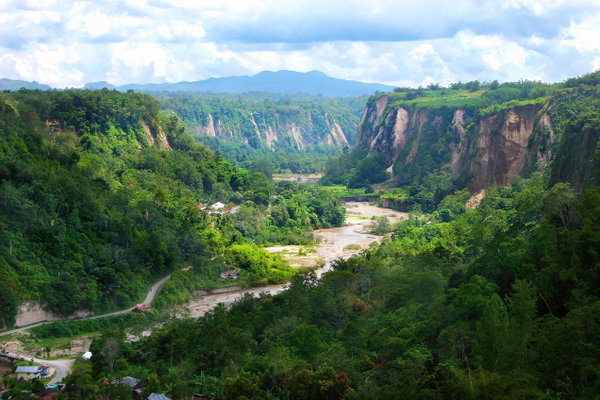
Sumbarprov.go.id, Public domain, via Wikimedia Commons
Conclusion: Bukittinggi invites you to immerse yourself in the captivating Minangkabau culture, offering a blend of history, architecture, culinary delights, and natural beauty. From exploring the iconic landmarks to savoring the flavors of Minangkabau cuisine, this vibrant city provides a cultural journey that will leave you with lasting memories. So, embark on an enriching adventure to Bukittinggi and discover the unique charm of the Minangkabau culture that permeates every aspect of this enchanting destination.
6. Merangin Jambi UNESCO Global Geopark
The Merangin Jambi UNESCO Global Geopark, located in the province of Jambi, Indonesia, is a site of significant geological importance that has received special recognition from UNESCO, a global organization that promotes education, science, and culture.
This geopark is known for its distinctive geological features, which provide valuable insights into the Earth’s history. It offers a fascinating opportunity for visitors to explore and learn about the planet’s ancient past. Additionally, the area is endowed with natural beauty, making it an appealing destination for both science enthusiasts and nature lovers.
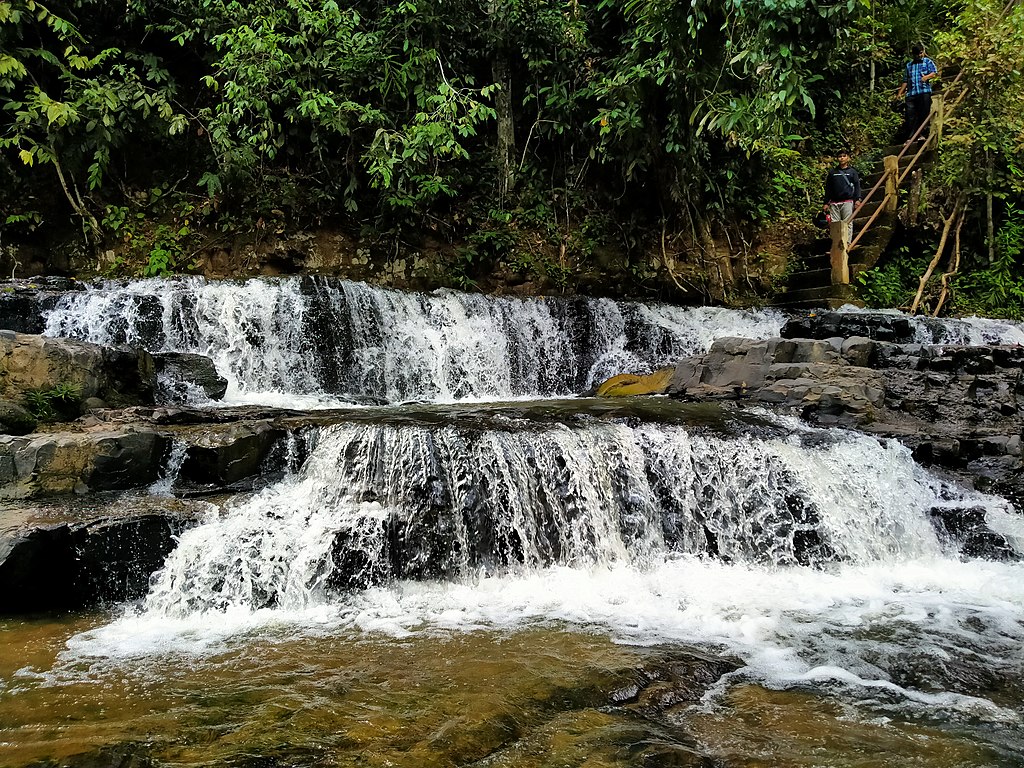
Muara Karing Waterfall, also known as Mengkaring Waterfall, is located in the Merangin Earth Park area (Merangin Geopark) or more precisely in Air Batu Village, Renah Pembarap District, Merangin Regency, Jambi Province. Roby diery, CC BY-SA 4.0, via Wikimedia Commons
What is it famous for?
The Merangin Jambi UNESCO Global Geopark is famous for its really old rocks and fossils, such as Permian flora fossil deposits, which date back approximately 252 to 299 million years. Some of these rocks are from a small piece of land called Cathaysialand that broke away from a bigger landmass called Gondwana millions of years ago. This geopark has special fossils like Araucarioxylon and Agathoxylon, which are the last ones left in the whole world. These fossils were found in a place that used to be a lake, along with leaf fossils and marine Fusulina fossils. The rocks here are also connected to volcanoes that erupted around 303 million years ago.
There are also cool caves in the geopark that formed a long, long time ago, around 164 to 100 million years ago. These caves are in the northwest part of the geopark. People have found really old things there from a time called the Mesolithic era. In another part of the geopark, there’s a highland area with an ancient volcano. It’s the last known big hole in Sumatra Island and in all of Indonesia. This volcano is connected to a big crack in the Earth’s crust that’s been active for a very, very long time.
How to get to Merangin Jambi?
To get to the Merangin Jambi UNESCO Global Geopark, you can typically fly into Sultan Thaha Syaifuddin Airport (DJB) in Jambi City, the capital of Jambi province. From the airport, you can arrange for ground transportation, such as a taxi or rental car, to take you to the geopark. It’s advisable to plan your journey in advance and confirm the transportation options available, as conditions may vary. Enjoy your visit to this remarkable geological site!
7. Berastagi: Nature’s Marvels and Cultural Delights
Set amidst breathtaking landscapes, Berastagi is a gateway to adventure and natural wonders. Marvel at the majestic Sipiso-Piso Waterfall, hike up the smoldering Mount Sibayak for a panoramic view, and explore the vibrant fruit markets. Immerse yourself in the Karo culture by witnessing traditional ceremonies and trying their delectable culinary specialties.

Berastagi viewed from Gundaling Hill. Christian Advs Sltg, CC BY-SA 4.0, via Wikimedia Commons
Sipiso Piso is a waterfall
Sipiso Piso is a well-known waterfall located in North Sumatra, Indonesia. It’s famous for its impressive height and the lush, green surroundings. The waterfall is a popular destination for tourists and nature enthusiasts visiting the region.
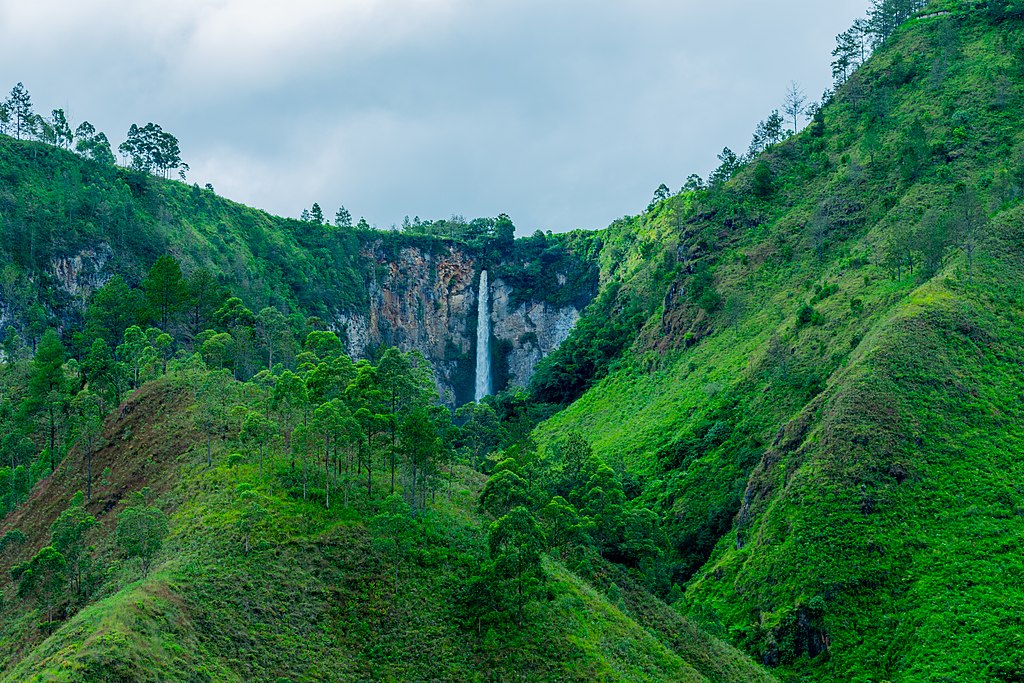
Sipisopiso Waterfall or Sipiso-piso is a waterfall located in Tongging Village, Brand District, Karo Regency, North Sumatra Province, Indonesia. Sipisopiso Waterfall has a height of up to 120 meters (393.7 ft). Nugraha, CC BY-SA 4.0, via Wikimedia Commons
To get to Sipiso Piso waterfall, you can start from the city of Medan in North Sumatra, Indonesia. It’s approximately a 2-3 hour drive from Medan to reach the waterfall.
The distance from Medan to Sipiso Piso waterfall is around 130-140 kilometers (80-87 miles) by road, depending on the specific route taken.
Once you arrive at the parking area near the waterfall, it’s a short walk to the viewing platform where you can see the waterfall in all its splendor. The walk from the parking area to the viewing platform typically takes just a few minutes.
Keep in mind that travel times may vary depending on traffic conditions and road conditions. It’s a good idea to plan for extra time to account for any unexpected delays.
Mount Sibayak
Mount Sibayak, located in North Sumatra, Indonesia, is a beautiful volcano that’s popular for hiking. It’s not too tough of a climb, making it suitable for many visitors. When you want to go, first head to the city of Berastagi. From Berastagi, it’s a short drive to the starting point of the hike. The trail is well-marked, and along the way, you’ll get to see stunning scenery, like hot springs and lush forests. When you reach the top, you’ll be rewarded with breathtaking views of the surrounding landscape. It’s a great adventure for nature lovers and those looking for a memorable outdoor experience!

Mount Sibayak, Sumatra. Zapata1000, CC BY-SA 4.0, via Wikimedia Commons
The hike up Mount Sibayak is approximately 5.6 kilometers (3.5 miles) long, taking about 3 to 4 hours to reach the summit. The duration may vary depending on your pace and how many stops you make along the way to enjoy the scenery. Keep in mind that this estimate is for the ascent, and the descent may take a similar amount of time. It’s always a good idea to start early in the day to allow for plenty of time and to avoid being on the trail after dark.
8. Way Kambas National Park: Wildlife Encounters
Way Kambas National Park, located in Lampung Province, southern Sumatra, with a total area of about 1300 km² (13 993 ft²). This national park is a haven for wildlife enthusiasts and nature lovers. This magnificent national park is renowned for its rich biodiversity, particularly its population of critically endangered Sumatran elephants. Explore the wonders of Way Kambas National Park and embark on an unforgettable wildlife adventure.
Venture into the wilderness of Way Kambas National Park, home to diverse flora and fauna. Embark on an elephant safari to spot the critically endangered Sumatran elephants in their natural habitat. Explore the park’s lush forests, observe exotic bird species, and immerse yourself in the wonders of nature. These majestic creatures roam freely within the park, offering visitors a unique opportunity to observe them in their natural habitat. Take part in guided elephant trekking tours where you can ride on the back of these gentle giants, gaining a deeper appreciation for their beauty and intelligence.
Lampung: Natural Wonders and Wildlife Lampung province offers a blend of natural wonders and wildlife encounters
Discover the hidden gem of Way Kambas National Park, where you can witness the majestic elephants, go birdwatching, and explore the park’s diverse ecosystems. Visit the stunning Kiluan Bay, known for its scenic beauty and friendly dolphins, and explore the traditional villages to learn about the unique Lampung culture.

Sumatran elephants are included in protected animals. The threat of extinction for this species occurs from various factors ranging from the narrowing of natural habitats and hunting of endangered species. Luckily on this island, there are natural habitats that are suitable for Sumatran elephant conservation such as this National Park in Lampung. For those who want to see Sumatran elephants, you can visit Way Kambas National Park. Mustiadewi, CC BY-SA 4.0, via Wikimedia Commons
Conservation Efforts
The reserve protects a few Sumatran tigers, the Sumatran rhinoceros and a reasonable number of elephants. It is also a great place to watch birds, some of which are rare like the white-winged duck.
Way Kambas National Park is dedicated to the conservation and protection of the Sumatran elephants and other wildlife species. The park serves as a vital sanctuary for these endangered creatures, providing them with a safe and secure environment. Visitors can learn about the park’s conservation initiatives and the challenges faced in preserving these magnificent animals.
Trekking and Wildlife Spotting
Embark on a trekking adventure through the lush jungles of Way Kambas National Park, accompanied by experienced guides who are knowledgeable about the park’s wildlife. Keep your eyes peeled for sightings of other fascinating animals, such as the elusive Sumatran tiger, tapirs, clouded leopards, and various bird species. The park’s diverse ecosystems offer a thriving habitat for these remarkable creatures.
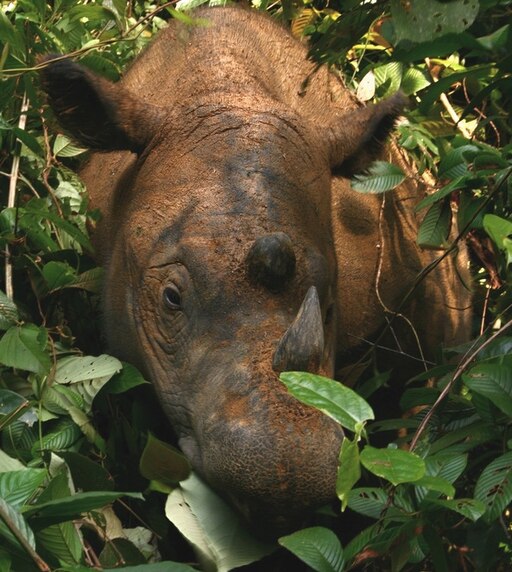
Sumatran Rhinoceros (Dicerorhinus sumatrensis sumatrensis) Rosa in the Sumatran Rhino Sanctuary, Way Kambas, Sumatra, Indonesia. Bruce1ee, Public domain, via Wikimedia Commons
Explore the Peat Swamp Forests
Way Kambas National Park is also renowned for its unique peat swamp forests, which are home to a variety of plant and animal species. Join guided tours that take you through these fascinating ecosystems, where you can witness the unique adaptations of flora and fauna to the challenging environment. Marvel at the towering trees, vibrant orchids, and delicate ferns that flourish in the park.
How to get there
If using public transport, the easiest route is to take a bus from Rajabasa Terminal in Bandar Lampung in the direction of Way Jepara. Get off at the stone elephant at Rajabasa Lama Village, Way Jepara, and resume by an “Ojek” or motorbike taxi to Way Kanan or the Elephant Training Center (ETC), which is the entrance to WKNP (Way Kambas National Park). Keep in mind that the last direct bus back to Rajabasa Lama returns at 3:00 PM Western Indonesia Time, and it’s best if you arrive before dusk, since the driver “Ojek” will not drive you after this time. The whole trip takes about around 2-3 hours. Alternatively, from Bandar Lampung you can take a bus to the metro and then another bus to Rajabasa Lama which also takes around 2-3 hours.
If you are using or renting a car, from Bandar Lampung take the Kota Bumi road north and just follow the serial elephant signs which will easily take you to WKNP. It is possible to hire a taxi from Bandar Lampung to Way Kambas but it is considerably more expensive. From Bandarlampung to the east of Lampung district, the roads are relatively good. However, as you enter the Sukadana region the journey will get a bit bumpy since some parts of the road are in poor condition. From Way Jepara walked to the entrance of WKNP the last poor condition road for about 5 km (3.1 miles).
Nias Island: Cultural Traditions and Pristine Beaches
The Nias Island is located off the western coast of Sumatra, Indonesia, is a hidden gem waiting to be explored. With its rich cultural traditions and stunning pristine beaches, Nias Island offers a unique and unforgettable travel experience. Let’s dive into what makes this destination so captivating.
Nias Island is a captivating destination that seamlessly blends cultural traditions with natural beauty. From the mesmerizing stone-jumping ceremonies to the world-class surfing spots and pristine beaches, this Indonesian paradise offers a truly unique travel experience. Whether you are seeking adventure, cultural immersion, or simply a serene getaway, Nias Island is waiting to be explored and cherished. Plan your visit to this enchanting destination and create memories that will last a lifetime.

Stone jumping ceremonies “fahombo”. A Teach, CC BY-SA 4.0, via Wikimedia Commons
Experience the vibrant culture and stunning natural beauty of Nias Island. Witness the fascinating stone jumping ceremonies, known as “fahombo” where young men showcase their strength and bravery. This ancient ritual involves young men leaping over towering stone walls, symbolizing strength, bravery, and the transition into adulthood.
Another prominent cultural tradition on Nias Island is the remarkable wooden houses, known as “omo sebua.” These intricately carved houses are constructed without the use of nails and are adorned with intricate designs that depict ancestral stories and beliefs. Exploring these architectural marvels provides a glimpse into the island’s rich history and artistic craftsmanship.
Indulge in thrilling surfing experiences on the island’s renowned waves, relax on pristine white sandy beaches, and explore the ancient megalithic sites that showcase the island’s intriguing history.
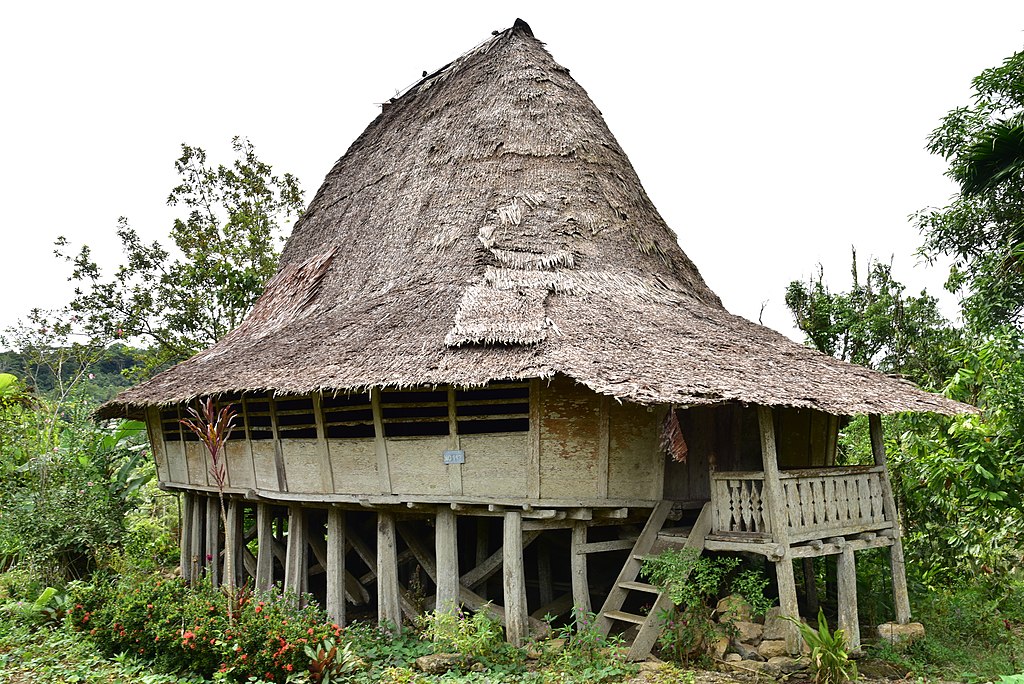
Nias Traditional House. Irfantraveller, CC BY-SA 4.0, via Wikimedia Commons
Pristine Beaches
Nias Island is blessed with pristine beaches that boast breathtaking natural beauty. One of the most famous beaches on the island is Sorake Beach, renowned for its world-class waves that attract surfers from around the globe. Whether you are an experienced surfer or a beginner looking to catch your first wave, the crystal-clear waters and consistent swells of Sorake Beach offer an ideal surfing experience.
Sorake Beach is famous for its big waves so it is perfect for surfing activities. Every year many tourists, especially foreign tourists who visit this beach.
On this beach surfing competitions are also often held, both local and competitions with participants from various countries. The Nias Open is one of the championships held on this beach, with hundreds of surfers from various countries participating and the winners are dominated by surfers from Australia each year.
For those seeking tranquility and relaxation, Lagundri Beach is a must-visit. With its powdery white sand, turquoise waters, and towering coconut palm trees, Lagundri Beach is a picture-perfect paradise. Unwind under the shade of a palm tree, take a leisurely swim, or simply soak up the sun while admiring the idyllic surroundings.
Exploring the Island
Beyond the cultural traditions and pristine beaches, Nias Island offers plenty of opportunities for exploration. Immerse yourself in the local way of life by visiting traditional villages, where you can interact with friendly locals, witness traditional ceremonies, and indulge in authentic cuisine.
Nature enthusiasts will be delighted by the island’s diverse landscapes, including lush jungles, magnificent waterfalls, and scenic viewpoints. Embark on a trek through the tropical rainforest to discover hidden treasures, such as Teluk Dalam Waterfall or the panoramic views from Bawomataluo Village.
How to get to Nias Island?
Getting to Nias Island requires a combination of air and sea travel. Here’s a guide on how to reach this beautiful destination:
Fly to Medan
The most common entry point to Nias Island is Medan, the capital city of North Sumatra, Indonesia. Several major airlines operate international and domestic flights to Medan’s Kualanamu International Airport (KNO). You can fly to Medan from various cities in Indonesia, as well as from international destinations such as Kuala Lumpur, Singapore, and Jakarta.
Travel to Teluk Dalam
From Medan, you’ll need to make your way to the port town of Teluk Dalam on Nias Island. There are a few transportation options:
a. Domestic Flight: You can take a domestic flight from Medan’s Kualanamu International Airport to Binaka Airport (GNS) on Nias Island. Several airlines offer daily flights, and the journey takes approximately one hour. Once you arrive at Binaka Airport, you can hire a taxi or take a public minibus (known as “angkot”) to Teluk Dalam, which is about a 2-hour drive away.
b. Ferry: Alternatively, you can take a ferry from the Belawan Port in Medan to the Gunungsitoli Port on Nias Island. The ferry journey takes around 10-12 hours, and there are different ferry operators offering regular departures. From Gunungsitoli, you can hire a taxi or take a public minibus to Teluk Dalam, which is approximately a 3-hour drive away.
Arriving at Teluk Dalam: Once you reach Teluk Dalam, you will find accommodation options and tourist services available. Teluk Dalam is a popular starting point for exploring the island, as it is centrally located and offers easy access to various attractions.
Padang: History, Cuisine, and Vibrant Streets
Uncover the historical and culinary delights of Padang, the capital city of West Sumatra. Explore the old town, known as Padang Kota, and discover the remnants of Dutch colonial architecture. Delight your taste buds with the rich and spicy flavors of Padang cuisine, served in the famous “rumah makan Padang” (Padang restaurants). Stroll along the bustling streets, visit the iconic Siti Nurbaya Bridge, and shop for traditional handicrafts and souvenirs.
Padang is a city located in the western part of the island of Sumatra. It is the capital of the western province of Sumatra.
It is one of the most important port cities in Indonesia. Padang is reputed to be one of the cleanest cities in the world. It has also twice obtained the title of the most beautiful city in Indonesia.
We advise you to visit its old Dutch quarter with many architectural buildings.
You can also go to superb beaches and taste typical and delicious dishes from Indonesia. It is a very pleasant city to visit in the center of Sumatra.
Museum Adityawarman. id:Pengguna:Gombang, CC BY-SA 3.0, via Wikimedia Commons
The must-see places to visit in the Padang region of Sumatra are:
- Pantai Air Manis Beach
- Pasumpahan Beach
- Adityawarman Museum
- Sitti Nurbaya bridge
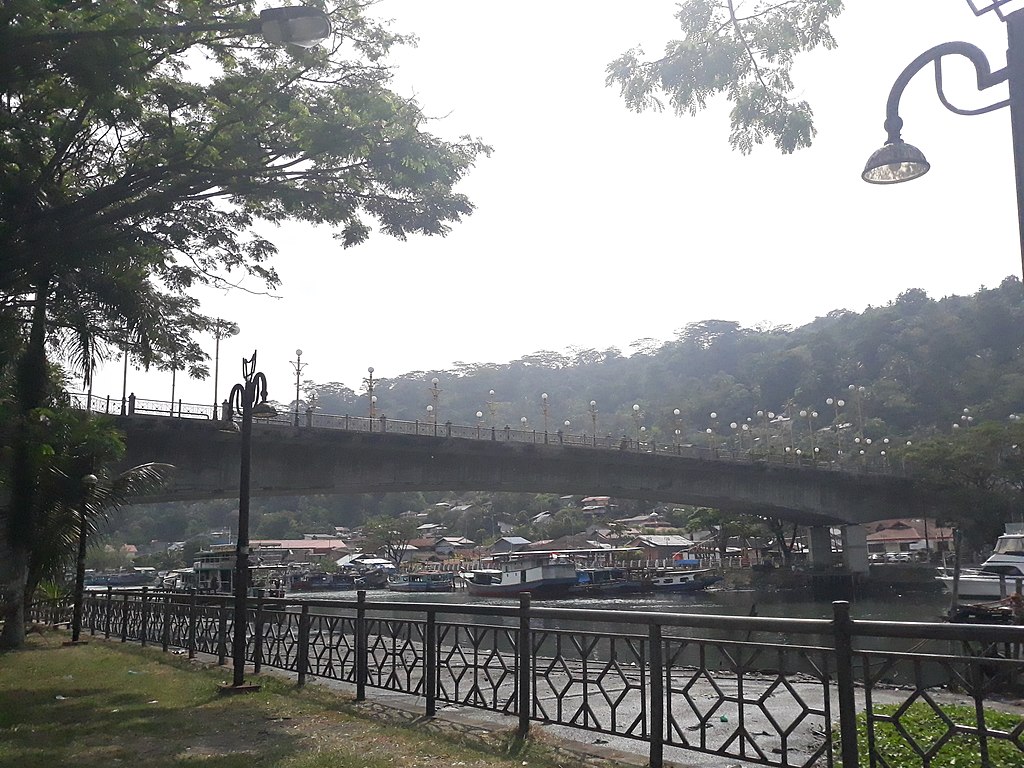
Sitti Nurbaya Bridge, Padang, West Sumatra. NabillaHanifahh, CC BY-SA 4.0, via Wikimedia Commons
Lake Maninjau: Escape to the tranquility of Lake Maninjau, nestled amidst lush green hills
Take a leisurely walk along the lake’s picturesque shores, rent a bicycle to explore the scenic surroundings, or simply relax and enjoy the breathtaking views. Experience the warm hospitality of the local Minangkabau people and indulge in traditional Minangkabau cuisine.

Lake Maninjau. Official Website of Indonesian Institute of Sciences, Public domain, via Wikimedia Commons
Belitung Island: Discover the pristine beaches and crystal-clear waters of Belitung Island
Explore the iconic rock formations of Tanjung Tinggi Beach, immortalized in the film “Laskar Pelangi.” Snorkel or dive in the vibrant coral reefs of Lengkuas Island and marvel at the underwater wonders. Take a boat tour to explore the hidden coves and enjoy the peaceful atmosphere of this untouched paradise.

Belitung is known for its beautiful beaches and calm and clean seas. What makes Belitung unique is the large number of rocks that form small islands throughout the Belitung Islands. Teodorus Alfons, CC BY-SA 4.0, via Wikimedia Commons
Belitung Island, nestled in the turquoise waters on the east coast of Sumatra, in the Java Sea. And it is a hidden gem waiting to be explored. This group of islands is off Sumatra, close to Palembang, and Belitung is the easternmost island. It is easily accessible by plane from Jakarta in just one hour. Several airlines serve Belitung daily: Garuda Indonesia, Sriwijaya Air, Nam Air, Lion Air, AirAsia…

Climbable rock formations of Tanjung Tinggi Beach, Belitung Island, Indonesia. Othello95, CC BY-SA 4.0, via Wikimedia Commons
How to get to Belitung island?
To reach Belitung Island, you can fly into H.A.S. Hanandjoeddin International Airport (TJQ) in Tanjung Pandan, the capital city of Belitung. Several airlines offer regular flights from major cities in Indonesia, including Jakarta and Surabaya. Upon arrival, you can arrange transportation to your accommodation or hire a car to explore the island at your own pace.
Kerinci Seblat National Park: Immerse yourself in the natural splendor of Kerinci Seblat National Park, the largest national park in Sumatra
Trek to the summit of Mount Kerinci, the highest volcano in Indonesia, for breathtaking panoramic views. Discover the park’s diverse wildlife, including the endangered Sumatran tiger and Sumatran rhinoceros, and witness the beauty of the park’s waterfalls and lush landscapes.

Kerinci Seblat National Park, also functions as a biodiversity preservation area for the benefit of preserving genetic resources, a vehicle for education and research, and supporting cultural development. Jefri afriadi, CC BY-SA 4.0, via Wikimedia Commons
Bengkulu: Uncover the Historical Gems Explore the lesser-known city of Bengkulu and delve into its fascinating history
Visit Fort Marlborough, an impressive colonial-era fortress, and learn about its role during the British occupation (1714-1741). Discover the remnants of the British and Dutch influence in the city’s architecture and stroll along the picturesque Pantai Panjang Beach, known for its scenic views and vibrant atmosphere.

Interior of north-east gate, Fort Marlborough. Crisco 1492, CC BY-SA 4.0, via Wikimedia Commons
Palembang: Heritage and Culinary Delights Experience the rich heritage and mouthwatering cuisine of Palembang, the capital city of South Sumatra
Visit the iconic Ampera Bridge, a symbol of the city, and explore the Kemaro Island, known for its Chinese temples and cultural festivals. Indulge in the local delicacies like pempek (fishcake) and tekwan (fish soup), and immerse yourself in the vibrant atmosphere of the traditional markets.

Montage of Palembang:
Masjid Agung Palembang, Ampera Bridge at Night, Sultan Mahmud Badaruddin II Museum, Gelora Sriwijaya Stadium Tribune. Yogwi21, CC BY-SA 4.0, via Wikimedia Commons
The city is nestled along the Musi River, offering picturesque views and a vibrant waterfront atmosphere. Palembang is famous for its iconic local dish, Pempek, a type of fishcake served with a tangy sauce. Visitors can explore the city’s historical sites, such as the iconic Ampera Bridge and the majestic Great Mosque of Palembang. The city also hosts the annual Pempek Festival, showcasing the culinary delights of Palembang. With its charming blend of tradition and modernity, Palembang welcomes travelers with its warm hospitality and cultural treasures.
Medan: Gateway to Sumatra Start your Sumatra adventure in Medan
The bustling capital city of North Sumatra. Visit the grand Maimoon Palace, a magnificent example of Malay architecture, and explore the vibrant markets and street food scene. Don’t miss the chance to try the famous Medan delicacies, such as soto Medan (spicy beef soup) and durian, the king of fruits.
The city boasts a mix of modern infrastructure and colonial architecture, creating an interesting juxtaposition. Visitors to Medan can explore its bustling markets, visit historical landmarks such as Maimun Palace, sample delicious local delicacies, and enjoy the city’s lively nightlife. With its warm hospitality and array of experiences, Medan is a destination that captivates travelers from around the world.
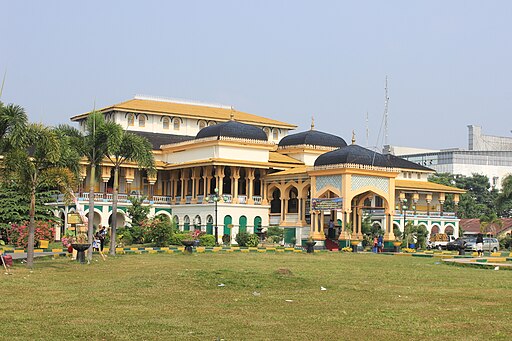
Maimun Palace, Medan. Mimihitam, CC BY-SA 4.0, via Wikimedia Commons

The downtown of Medan in January 2019. Bluesatellite, CC BY-SA 4.0, via Wikimedia Commons
Photo credit (main picture): Holbung Hill (North Sumatra). Francis Hartanto, CC BY-SA 4.0, via Wikimedia Commons
Must See Places in Indonesia | A Guide to the Country’s Best Attractions to Explore and Discover
Have you booked your villa in Seminyak centre, Bali?
Located in Seminyak Center – Bali, Villa Carissa offers a private swimming pool and enclosed garden to guarantee your privacy. You can book your private pool villa here with us.
Whether you’re traveling with family, friends, or on a romantic getaway, villa Carissa in Seminyak center offers the perfect base for exploring Bali’s many attractions and enjoying a relaxing vacation.


